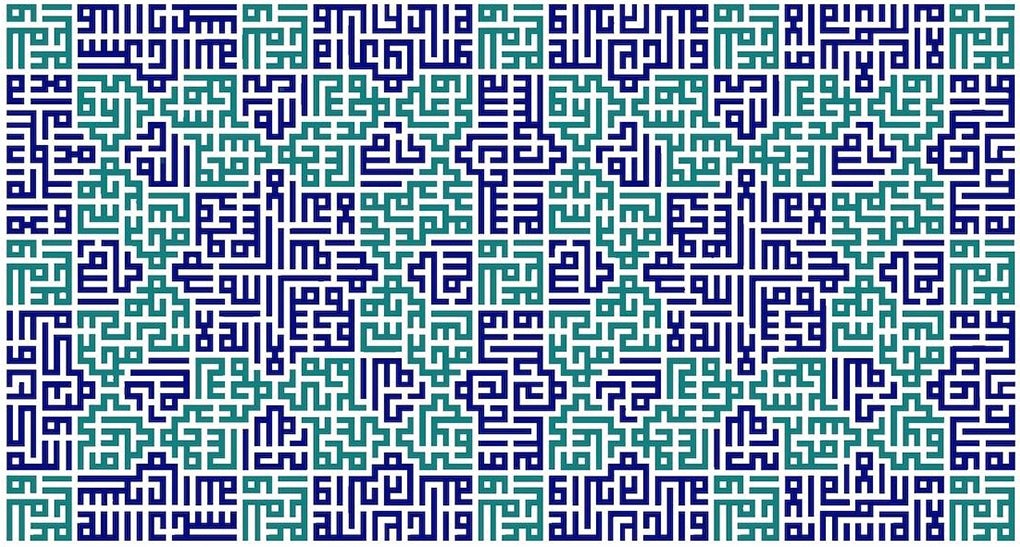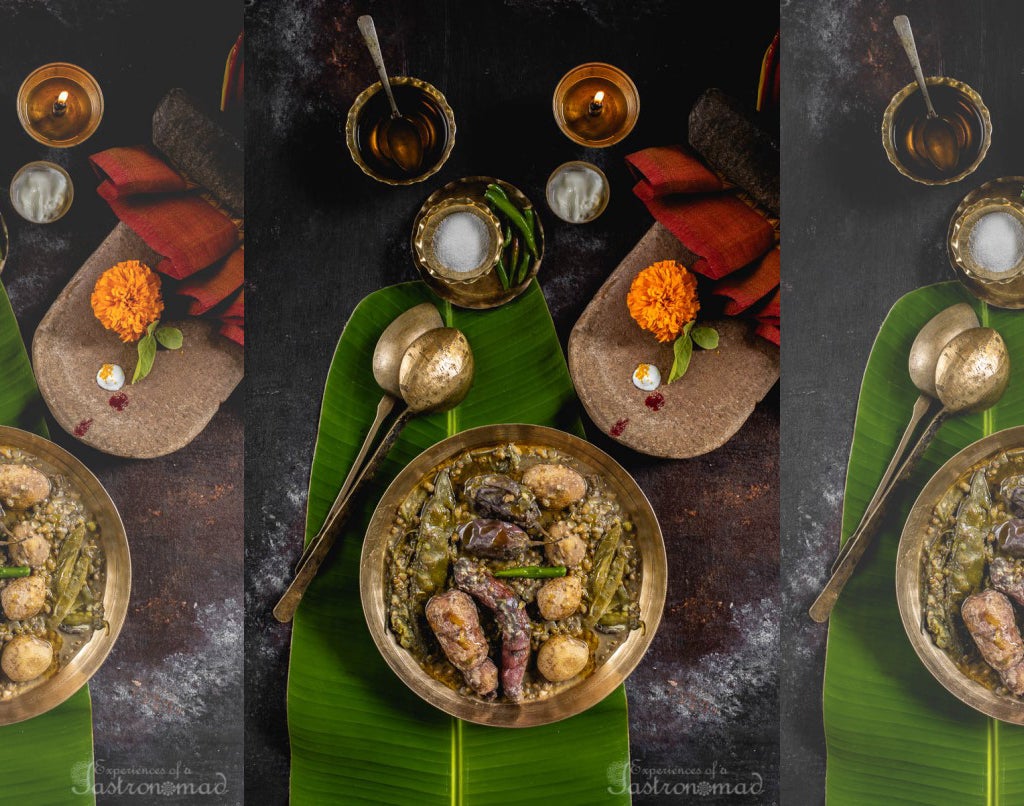"All of Singapore is now a Zawiya": Shadhili Sufism and Sensorial Challenges to Worshipping-From-Home
contributed by Muhammad Lutfi Bin Othman, 7 July 2021

Cover Image: Islamic Graphic
Since March 2020, the members of the Shadhili Sufi order in Singapore have been meeting online for their weekly gathering (majlis), having been kept out and far away from their lodge (zawiya) in Malaysia due to COVID-19 and the closure of the border between the two neighbouring nations. Every Thursday evening members of the Shadhili order usually engage in gatherings of remembrance (dhikr), including the chanting of God’s divine names and prayers for the Prophet Muhammad. This Sufi order is also known for a practice called hadra, which is a breathing dhikr performed while standing hands clasped in a circle, while surrounded by singers who sing mystical poems. Some have considered this a dance of sorts but for the Shadhilis themselves it is considered the act of remembering God with the whole body.
The shift from physical practice to religious virtuality has been a spiritually arduous undertaking for a group who typically has such sensorially engaging gatherings. Their congregations are characterised by a seamless, immersive sound world of chanting and singing. Often, it can be loud and lively, involving animated movements of the body, contrasting the quiet, seated dhikr that you would find in the local mosques in Singapore. Their zawiya would be engulfed in a fragrant haze from the burning of incense. At the end of the gathering, their skin would smell and feel musky from the sweet smoke clogging their pores, forced open by the sweating caused by moving vigorously in the hadra and the tactile companionship of their fellow seekers. Being in the zawiya is an experience that engages the entirety of the human sensorium. Since March 2020, however, this order has been unable to practice in the same way and are left only with online participation, a poor substitute for this viceral sensorial in-person experience.
Ethnographic Snapshot of an Online Gathering
17th September, 2020.
Sonically speaking, the quality of the majlis changed significantly since the singers in the group were able to gather again in Phase 2 of Singapore’s re-opening, starting from June 19, 2020. Today, they gathered at the house of Shakur and sat on the floor of his living room. The representative (muqaddam) of the Singaporean Order of Shahdhilis, Abdullah Sufian, is in virtual attendance today and he sits in his home with his sons beside him. He keeps his camera on, but he is muted. Taking his lead, a few others keep their cameras on as well.
Perhaps because of all the videos being on, the connection is unstable today and the audio is not always clear. For a moment, the sound spikes and then ducks out. The sound returns muffled momentarily before normalising again. It happens again a few moments later. Yet, the swaying bodies suggest that the participants seem to be unaffected by the low sound quality, especially Ismail, who looks to be singing enthusiastically at home, behind his muted mic.
After the singing, Abdullah Sufian engages with them in spiritual discourse (suhba). At some point in the conversation, he felt moved to remind them “we need to be doing our dhikr. It is the basic requirement of being on the path. I know there are some of you who are letting go of the daily litany (wird)…we need to be disciplined with it,” he stresses. “There is actually a lot of wisdom in this COVID time”, he says, “we have no hadra, we have no zawiya, so the wird is important.”
“But look,” he continues “you are all in your homes . . . we are scattered all around Singapore, spreading the dhikr. Suddenly, the whole of Singapore is now a zawiya. So just dhikr, there is no need to think about where everyone is, where we are. Don’t think about all this: just dhikr.”
Just then, sounds of public transport are heard. One of the seekers is watching from a bus, and the soundscape of Singapore’s public transport now seeps into the soundscape of their virtual zawiya. Abdullah Sufian ends the gathering by saying “We shall meet again soon. We are not far from each other so don’t feel distant. When you understand this, then you realise that Allah is not distant.”
Sensory Challenges to Worshiping from Home
The zawiya is the lodge where Singaporean Shadhilis have made a home for themselves and their weekly gatherings. It is a place marked by Arabic calligraphy, the smell of Arabic perfume and frankincense, and pictures of Sufi saints. The word zawiya translates literally into “corner” so it would not be inappropriate to describe this place as their “corner of the world” where they can come together in communion and in the remembrance of God. In this corner, they can be as loud as they want and fill the space up with any sensory objects deemed necessary for the creation of spiritual presences. The pandemic not only deprived them of a world of sensory immersion, but also of a space where they can worship in freedom.
For Muslims all over the world, individual homes have been transformed into spaces of worship during the COVID-19 pandemic. In Singapore, this was itself the directive of the Islamic Religious Council of Singapore (MUIS) in a ruling where they announced that places of worship will be closed and that Friday prayers as well as other congregational prayers in mosques will be suspended. They highlight that this is in line with Islamic teaching. Even the call to prayer (adhan), has a version that reflects domestic worship in perilous times with the added lines ‘pray in your homes’. The masjid, by definition, is anywhere a Muslim makes a prostration (sujood) in worship to God so much so that individual acts of prayer ‘create a mosque every time they take place regardless of the availability of buildings created specifically for this purpose’ (Khoury 2009, 484). The constitution of the masjid has always been modular and spaces of worship transposable following the direction of a famous hadith, which states that the entire world can be a mosque as long as that place is clean (ibid).
With the claim that “all of Singapore is now a zawiya”, it would seem that the Sufi lodge itself can also be modular. If the masjid (mosque) is anywhere the Muslims make a prostration, then Abdullah Sufian seems to suggest that the zawiya is anywhere the Sufi performs dhikr. Much like the mosque, during lockdown the individual home is itself the zawiya. Crucially, Abdullah Sufian’s advice for his fellow seekers suggests that the closure of the zawiya as a distinct space of worship should not lead to a dissolution of the activities that are quintessential to these seekers; dhikr. On the contrary, it highlights that the remembering of God can be practiced at any given space. One of the seekers, Ismail, relates this to me:
When you do the majlis online, it makes you realise that you can be in any place…when it comes to remembering Allah, it can be in an online setting or just you alone at home; the discipline requires you to actually be consistent in remembering Allah. If my thought was I’m remembering Allah only during the Thursday night majlis and the rest of the week I’m not remembering Allah, then that’s definitely not right.
(Ismail, interview with author, February 2, 2021)
Yet, the home-zawiya is not a space where they can worship without reservation. When individual seekers make adjustments in their domestic spaces to recreate the sense of the zawiya in their home dwellings this presents challenges to the household, as Ismail reveals to me when asked about his engagement with the online majlis at home:
Normally I would recite it aloud. I’m using my headphones so I will read based on my feeling. I give it 100%…There was one time when my second child was asleep so when I recited, he actually cried. My wife was like ‘can you, like, lower down your volume?’
(ibid)
Another Seeker, Naj, describes how his brother, a fellow member of the order, prepares for the online gathering by burning incense (like he would do at the zawiya) to the annoyance of the other household members:
For the online majlis Hassan would be in his room, closed door, burning agarwood incense (bakhoor) so the whole house would smell, but his room is the source of where it comes from. It’ll be engulfed in smoke! But it has toned down now because of complaints from everyone that the house is too smoky. So, it’s really down to the particular individual to set up how he wants to feel for the particular majlis.
(Naj, interview with author, August 25, 2020)
When the sound- and smellscapes of the zawiya permeate into their homes, it stresses the difficulty of turning a domestic space into a space of worship. It may not be an issue for the seekers themselves when discordant sounds seep into the soundscapes of the virtual zawiya, but when the sensory-scapes of the zawiya seep into that of the home, into the ears (and noses) of those who are not accustomed to their gathering, it might, expectedly, lead to some displeasure. Sufism can leave sensory trails wherever God is remembered. While this may not be the point of Sufism, it is often a by-product of it. For people at home, however, such sensory trails might be noisy and smoky hindrances to peaceful life in shared domestic spaces. What is in-its-place in the space for worship can sometimes be out-of-place at home. A huge aspect of living through lockdown is learning to navigate new meanings that are imbued upon familiar spaces: house-conference rooms, bedroom-offices and home-zawiyas alike. For many, especially women, home can sometimes also be a space of stress and silent suffering as the demands of the upkeep of domestic spaces can often fall on the sole responsibility of wives and mothers. As domestic spaces now take the function of worship spaces, negotiations of home life must be navigated from all angles lest the attitudes of life at home counteract the necessary attitudes of morality, peace and justice required by worship and the atmosphere of spaces that they take place in.
As the pandemic rages on with no clear end in sight and the physical zawiya remains out of reach for at least the foreseeable future, these homebound Shadhilis are forced to continue their worship away from the space allocated for it, navigating the sensory negotiations that their individual circumstances allow. At the same time, it is conceivable to imagine that the largely unmentioned actors in this story - members of the household - are also compelled to negotiate the bifunctionality of the home-zawiya that is forced upon them in their own ways. For the Shadhili, worshipping from home means that the opportunity to refine themselves through individual dhikr is still possible. As their guide reminds them, when the separated companions are not perceived as distant, then they can realise that God, too, is close and only an act of remembrance away. On the other hand, it remains to be seen what this means for others sharing the space, on a sensorial level but also emotionally. Over time, further research should investigate what the impact of the bifunctionality of spaces that is superimposed onto the boundaries of the home has on domestic relationships.
Bibliography
Khoury, Nuna N. N. (2009). “Mosque (Arabic: masjid, place of prostration)”. In The
Encyclopaedia of Islam, Edited by Juan A. Campo, 484. New York: Facts on File, Inc.
Disclaimer: The views and opinions expressed in this article are those of the authors and do not necessarily reflect the position of the blog editorial team or the Asia Research Institute.
South Asia | Southeast Asia | East Asia | Other Places | Hinduism | Buddhism | Islam | Christianity | Other Religions
Muhammad Lutfi Bin Othman is a PhD candidate in ethnomusicology and sound studies. His interest in sound lies in the role that sound practices and sonic media play in religion and spirituality in shaping the parameters of religious piety and belief. His thesis focuses on Sufism in Singapore and the links between sonic performances and a form of experiential knowledge that is felt in the heart of the seeker. He is also interested in the transnational solidarity between members of global Sufi Orders and Muslims in Singapore and the role that sonic performances and audio-visual material play in fostering such relationships.
Other Interesting Topics
Fractured Fluidity, Reified Ritual: E-snan and Changing Dynamics of Makar-snan during COVID-19
As the plaguing pandemic of COVID-19 swept the world, the months-long hiatus brought by lockdowns and ‘physical distancing’ has left dramatic impacts on every walk of life including the realm of religious practices. With several of the religious meanings being re-negotiated and ritual praxis being altered in light of the frightening fragility...
New Diseases, Old Deities: Revisiting Sitala Maa during COVID-19 Pandemic in Bengal
The Goddess Sitala, or the ‘Cool One’(Wadley 1980), is worshipped by Hindus in Bengal and several parts of Northern India, as a controller of illness, protector of children, and bringer of good fortune. She is commonly associated with poxes, (primarily smallpox)...
The Cult of Goddess Pattini at a time of Pandemic: Gammaduwa as a Strategy of Supernatural Protection
During times of uncertainty and danger, people often use rituals to reduce their stress and exert control over their environment. A global pandemic is also a time of significant transition and uncertainty when people have greater need for physical and social support. Over the past year, people have used their ritual traditions as a strategy of invoking supernatural power...




